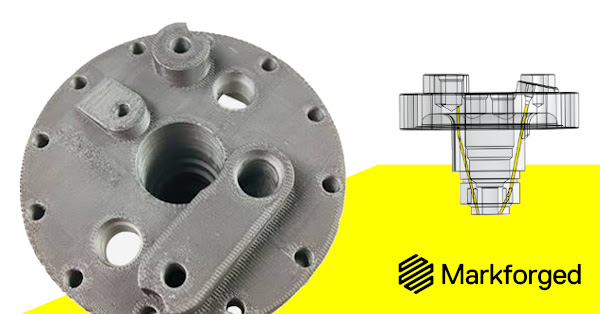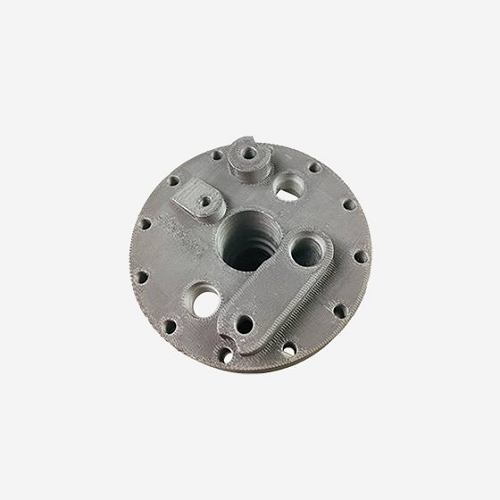Funded through the US Department of Energy (DoE), national science laboratory Sandia National Labs has been working with 3D printing for some time now, creating solutions for applications in the robotics, wind power, and nuclear energy fields, among others. Headed by a specific research group within Sandia, one project aims to to improve the efficiency of internal combustion engines by fabricating actual scenario simulations for a variety of diesel fuel flows.
This group specializes in coming up with new and different methods for designing fuel nozzles that make it possible to offer internal combustion engines with the proper flow. This is no easy manufacturing task, as these nozzles feature complex, intricate internal geometries, which makes the part production longer and more expensive. Luckily, 3D printing can help with this.
In order to successfully fabricate these unique internal nozzle geometries for functional prototyping purposes, Sandia works with third parties to access their CNC machining and laser sintering systems. Now, however, the lab is partnering with Markforged in order to use its metal AM platform to create the internal nozzle geometries necessary to build next-generation engines.
In the past, Sandia has considered using laser sintering 3D printers, but instead found that Markforged technology is able to print functional metal parts in-house, and is able to conform to the lab’s Environmental Health & Safety (EHS) requirements. Partnering with Markforged to make a 3D-printed diesel fuel injector adapter has allowed Sandia to save time and money by not having to work with third-party vendors that will charge more for projects that will end up taking a long period of time. The lab can also achieve better design iterations and lower lead times thanks to a new, simpler workflow: design the part, 3D print it, and use an internal CNC to post-process mating features and critical surfaces.
To test out parameters set by the Engine Combustion Network (ECN), a consortium of industry leaders and other labs that are also researching how to increase the efficiency of internal combustion engines, Sandia used 17-4 PH stainless steel in 3D printing the diesel fuel injector adapter. Instead of relying on costly, specialized equipment from outside vendors, using a single Markforged 3D printer allows the lab to create the intricate internal geometries that are necessary in order to execute optimal internal flow lines.
According to a press release, Sandia is currently “quantifying several immediate performance impacts in testing” for its 3D printed diesel fuel injector adapter.” In addition, the lab is also looking to see whether it can use other Markforged materials, such as Inconel 625, to print more high-impact parts, like critical fixturing components, nozzles, and high-temperature valves.
(Source/Images: Markforged)
Subscribe to Our Email Newsletter
Stay up-to-date on all the latest news from the 3D printing industry and receive information and offers from third party vendors.
You May Also Like
3D Printing Financials: Fathom Struggles in Financial Quicksand During Critical Transition
Facing a year of key transitions and financial pressures, Fathom (Nasdaq: FTHM) has filed its annual report for 2023 with the U.S. Securities and Exchange Commission (SEC). The document outlines...
Latest Earnings Overview for Australian 3D Printing Firms Titomic and AML3D
Australian 3D printing manufacturing firms Titomic (ASX: TTT) and AML3D (ASX: AL3) reported their financial results for the period from July to December 2023, marking the first half of their...
3D Printing Webinar and Event Roundup: April 7, 2024
Webinars and events in the 3D printing industry are picking back up this week! Sea-Air-Space is coming to Maryland, and SAE International is sponsoring a 3D Systems webinar about 3D...
3D Printing Financials: Unpacking Farsoon and BLT’s 2023 Performance
In the Chinese 3D printing industry, two companies, Farsoon (SHA: 688433) and Bright Laser Technologies, or BLT (SHA: 688333), have recently unveiled their full-year earnings for 2023. Farsoon reported increases...

































